Matchbox / Revell
Dornier Do-28 Skyservant in 1/72 scale: modelling report
PAGE 1
PAGE 2
PAGE 3
PAGE 4

Many years ago in 1974 Matchbox came with a 1/72 Do-28 D kit PK-107 with multi coloured parts. It was a real classic kit with the side opening box with transparant view. This kit had simple decals for a West German MFG 5 scheme and a white Swedish Red Cross scheme.
The kit repopped in several releases including a combined Matchbox / Revell box #40102 in 1997 in all green plastic.
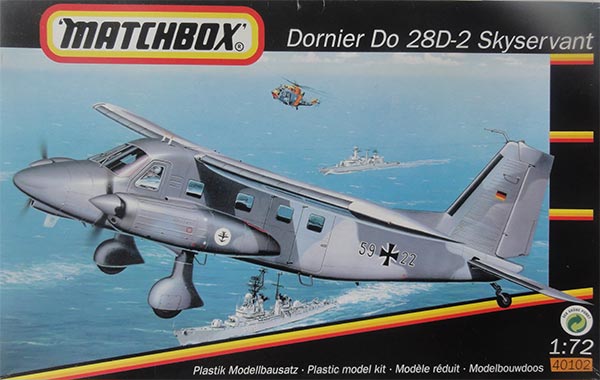
It had decals for a single West German Bundesmarine Geschwader 5 at Kiel in 1985 scheme:
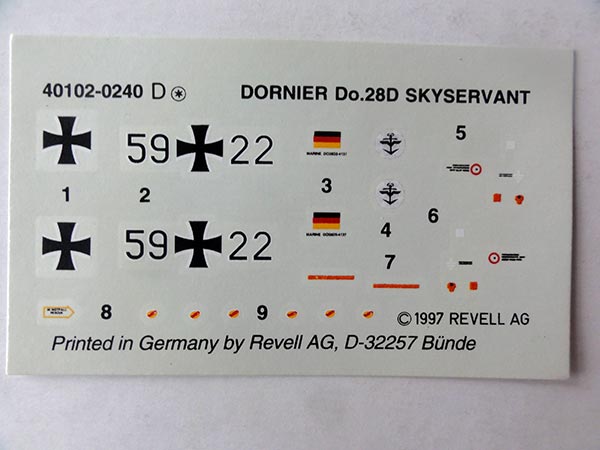
Using the same moulds released by Revell Germany several kits came as well.
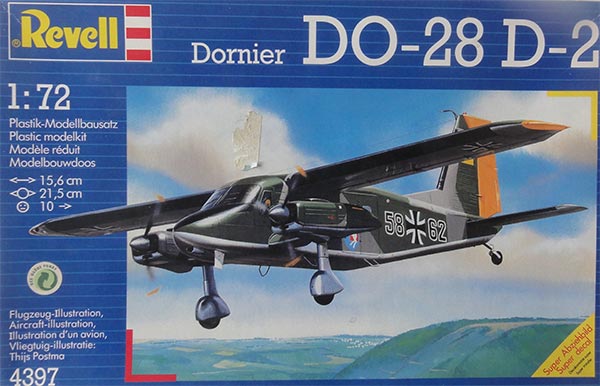
The Revell kit #4397 of 1991 had decals for a camouflaged West German Luftwaffe JaBog 36 scheme and a Bundesmarine aircraft.

The latest Revell release #04193 of 2008 has very good decals though for a single Luftwaffe AG52 at Leck air base in a fare well scheme of Do-28D 58+29 of 1993 with a colourful tail:
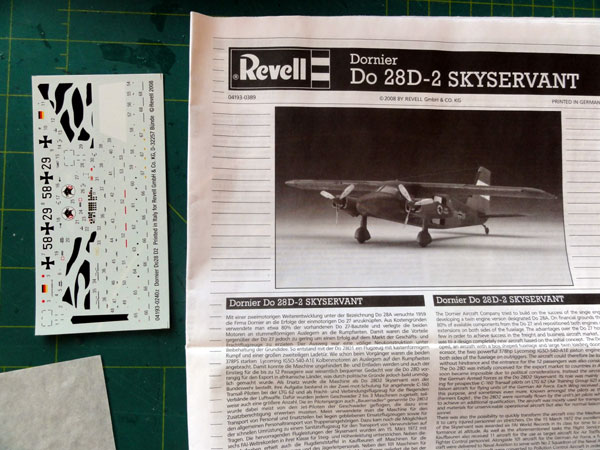
Back to all the same parts in these kits with 2 plastic and a transparant sprue with some 60 parts in total. The scale dimensions look OK.

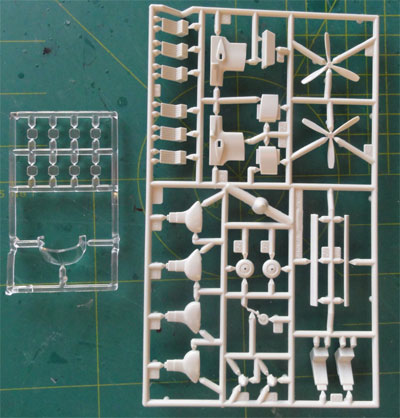
Surface detail is almost absent. You get a cabin floor with seats and instrument panel for the interior with the nice option to set the 2 cabin doors open. The cabin windows themselves can be set from the outside which is a big advantage as this can be done after giving the model its paint scheme.
There are not many detailed kit parts such as the large pitot on the vertical tail. Other extra details can be added easily from scrap such as flap hinges, antennas, wind shield wipers, lights and static dischargers etcetera. Depending on the kit's age, some shrinkage can be present that needs filling.
Several kits of different releases and brands were made, but these all originate from the first old Matchbox release.

Common items that can be improved or added to a model are listed now.
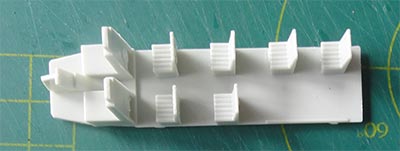
Cabin doors can be set open. In that case, add some more details inside the cabin. Drawn pencil lines suggest frames and panels.
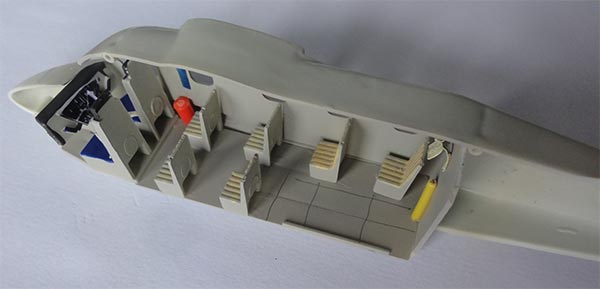
Close up the tail section inside the cabin with a bulkhead made of plastic card at rear of floor.
Add two control wheels on the instrument panel and few foot pedal controls.
Add seat belts made from painted tape and some bits from scrap like a fire extinguisher.
Paint inside of cabin medium grey for which Revell Aqua 75 grau acrylic paint is suggested but any grey paint will do as probably this varied.
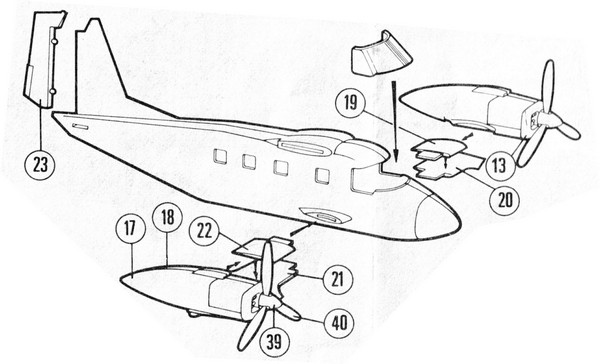
Engine nacelles do need some putty and sanding with their stubs. Retain the engine maintenance hatches inscribed panel lines. There is a bit basic engine front detail and just a bit of depth, I painted these black and metallic.
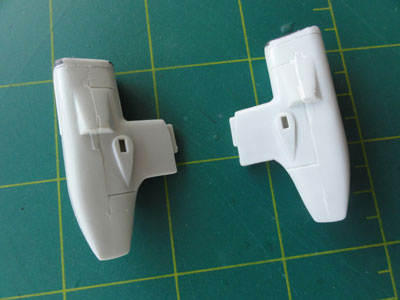
The propellers are obviously not yet set in place.
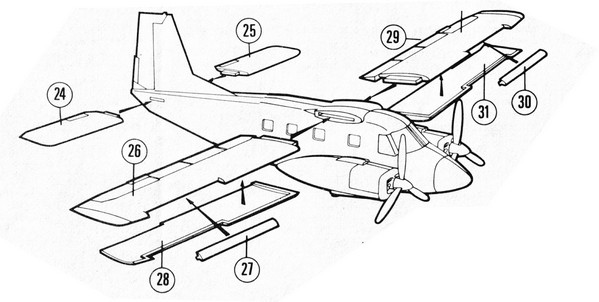
It was decided NOT to install the large wing until after painting the desired paint scheme. To get extra strength later on, a metal rod as spar will be set. This needed at this stage some hole drilling and all wil be set later on.
The wing control surfaces were sawed in with a razor saw. The aileron lines were inscribed deeper. On the lower wing the gaps were not filled, the real Do-28 has quite big gaps with simple construction.

NOTE: flap hinges are missing in the kit so will be added later on from plastic card.
The wind shield was set in place and white glue closed the gaps. The clear sections were masked with tape. (the cabin windows were not yet installed).
The fuselage, nacelles, wheel legs and fairings were joined. The two wing halves were not set yet.

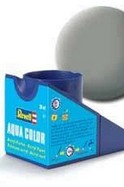
Putty was applied at particularly the fuselage joints. Also, shrinkage dents were filled.
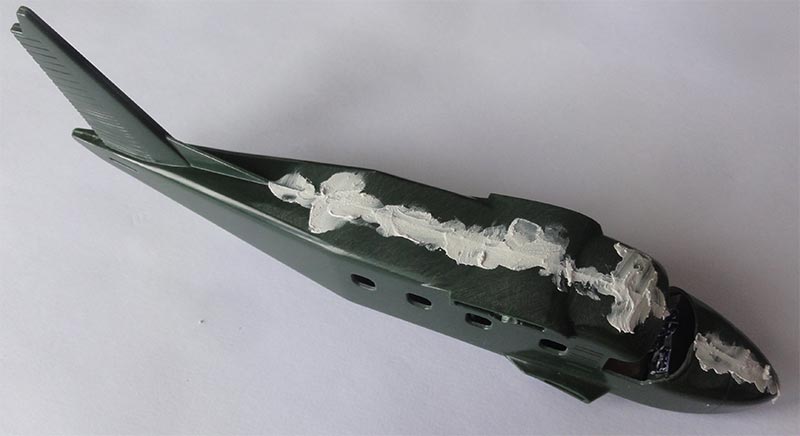
The wind shield was also installed, some Micro Kristal Klear closed some gaps (or use white glue). Note that this will be masked off prior to airbrushing.
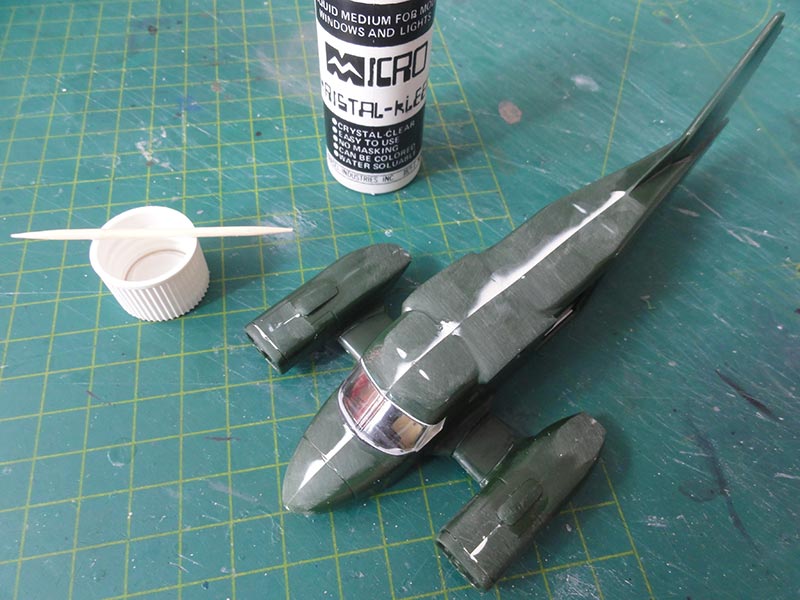
After sanding install the horizontal stabilizers at 90 dregrees angle without dihedral.
A base coat was airbrushed with Revell Aqua 75 steingrau to check for any flaws and to get an even base coat. This is essential.
Each model got now get the paint scheme/ livery with usually still the wing halves not fitted. On some Dorniers the wing, stabilizers and tail have black de-icing booth on the wing leading edge but not always. Mask at this stage and airbrush black if needed.
The propellers are light grey and were airbrushed. After drying they got the black edges painted with yellow propeller tips with a fine brush. The spinners often have the surrounding paint scheme colour.
After the paint scheme has been applied the wing halves can be set in place. I used a metal rod for extra strength as "spar". I did not bother too much about the step between wing halves and fuselage as on the real Dornier these are also seen, the aircraft has a simple low cost structure. White glue was used to close gaps.
Next add the various details:
Fit a large pitot from scrap on the vertical tail tip. This is seen on all Do-28D aircraft. Set a big transparant anti collision light on the rudder top, made from clear transparant red plastic. On the lower tail a smaller red light was added, the wing tip lights were painted red (left side) and blue (right side) dots.
The tail wheel is installed as per kit and painted.
The cabin doors can be set open, it appears that often only the rear doors is open and folds onto the forward door. Next came 2 what seem steps at the fuselage sides aft of the nacelle stubs made from thin metal wire. Another entry step was set at the fuselage cabin doors.
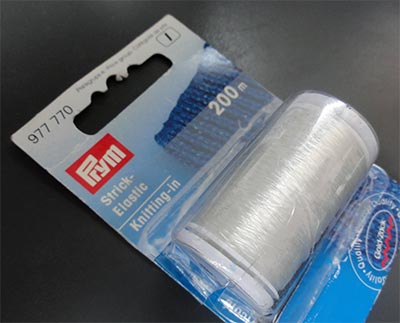
Usually the Do-28D has a long wire antenna; this was made from Prym "strick elastic" wire (or use fishing line). A small hole was drilled in the cockpit roof to get a first base point and the rear end is at the tail pitot and the wire is set with super glue.
The many static dischargers seen on the Do-28D were made from wire (use flex wire or EZ line bits ) and set with super glue: 2x4 at main wing, 2x3 at each horizontal stabilizer and 4 at the rudder and 1 at the fuselage end.

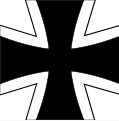
The first model presented was made as per Revell kit #4397 for the West-German Bundesmarine/ Deutsche Marine aircraft in a grey camouflage scheme as flown from the base Kiel in 1985.
The colour scheme comprises:
-1- light grey RAl 7030 for which Revell Aqua 75 steingrau was correct;
-2- RAL 7023 grau with Revell Aqua 57;
-3- RAL 7012 basaltgrau with Revell Aqua 77.
(these are water based acrylic paints).

Soft demarcation masking was done by hand with pieces of paper while airbrushing. The de-icing boots at the leading edges were, after masking, airbrushed dull black.
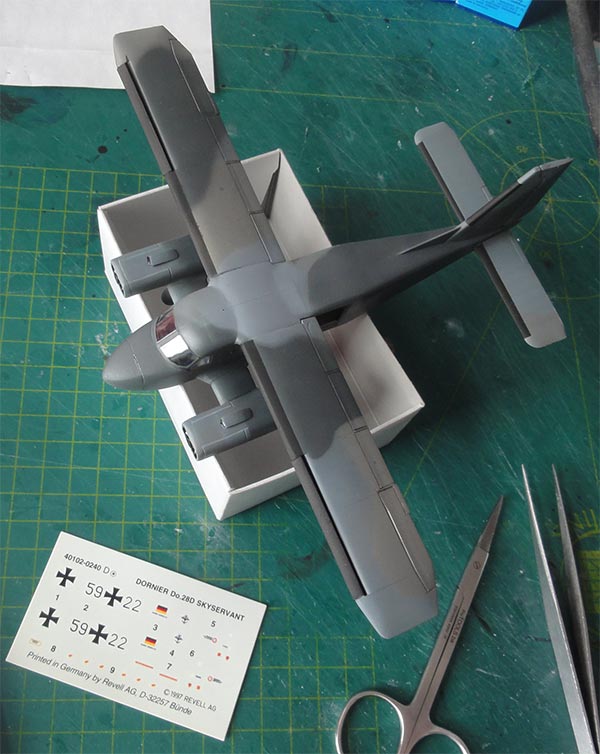
Decals were applied after the model got a few gloss varnish coats to avoid "silvering" airbrushing Johnson Future/Pledge thinned with 10% Gunze Sangyo Mr.Colour Levelling Thinner acrylic.
Decals are from the kit but with some extra stencilling from Revell kit #04193.
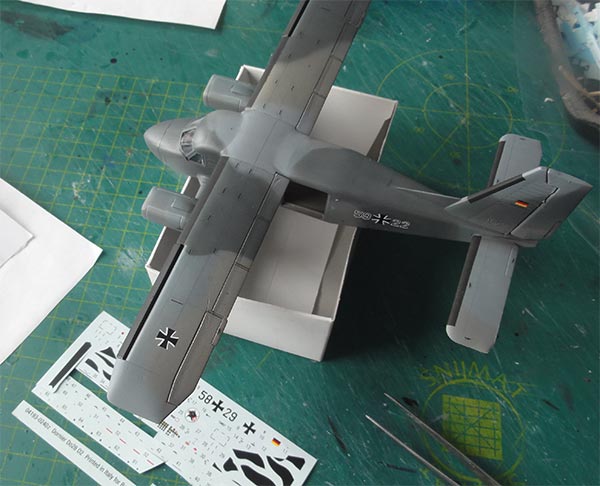
Drawn pencil lines suggest panels and some wash was applied in control surfaces.
The final items to install are the cabin doors that were set open and items as listed earlier like pitot, wire antenna, wipers, steps, static dischargers.
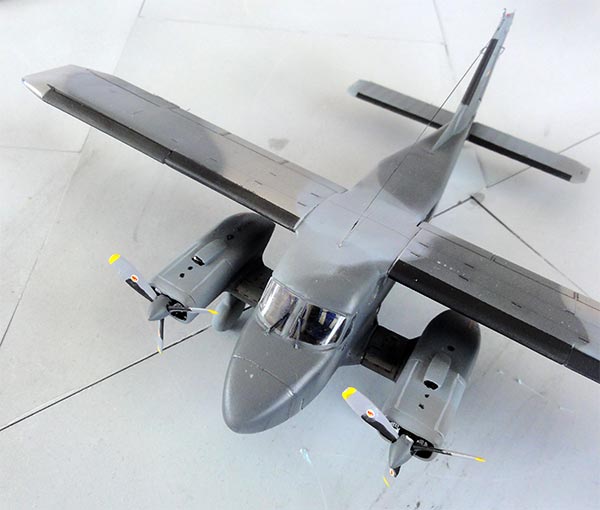
The propeller was hand painted with light grey blades, tiny black de-incing panels and yellow tips.
A final semi-mat varnish coat with airbrushed to give an even sheen and protect the decals.
WEST-GERMANY Deutsche Marine
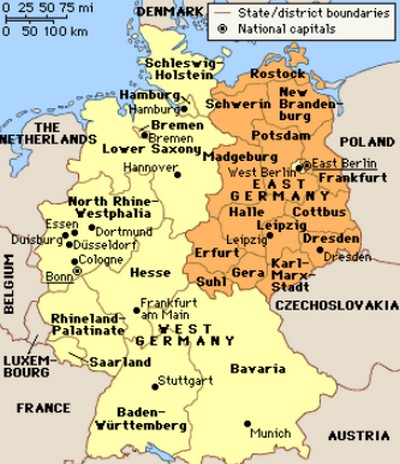


[ West-Germany: area 248,717 sq.km | 1990 population: 63 million | capital: Bonn ]
[ with DDR after 1990: area 357,000 sq.km | population: 83,2 million | capital: Berlin | GDP 50,000 Euro per capita nominal ]
At the end of the Second World War mid 1945 occupied Germany was divided in Allied sectors and the Soviet occupied East sector in 1949 became the German Democratic Republic (DDR) with a divided Berlin. The Western sectors became West-Germany. In 1955 West Germany joined NATO and a new West German Air Force was founded in 1956 during the Cold War. Still called the Luftwaffe it was part of the Bundeswehr and aligned with the Northern British command and Southern American command. Several American aircraft were made available such a the F-84 Thunderstreak and F-86 Sabres. In 1960, the first F-104 Starfighters arrived that served until 1991. An air arm was also set up to execute naval strike, called the "Marineflieger". Missiles were also deployed like the Nike Hercules, Hawk and Pershing. European cooperation started to produce aircraft with European defense programs. The result was a transport aircraft like the C-160 Transal, with first deliveries in 1968. Smaller transport aircraft were also used like Dornier Do-28 and later Do-228 with over a 100 aircraft operated.
Read more about the West-German air forces at my Alphajet page here...


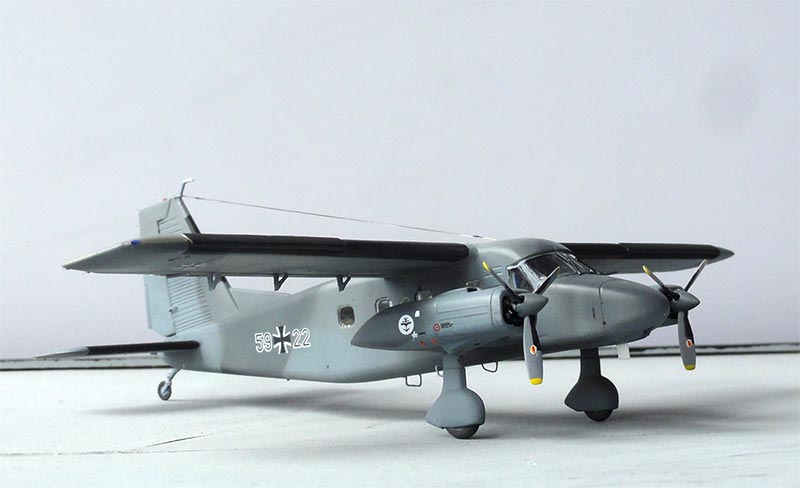
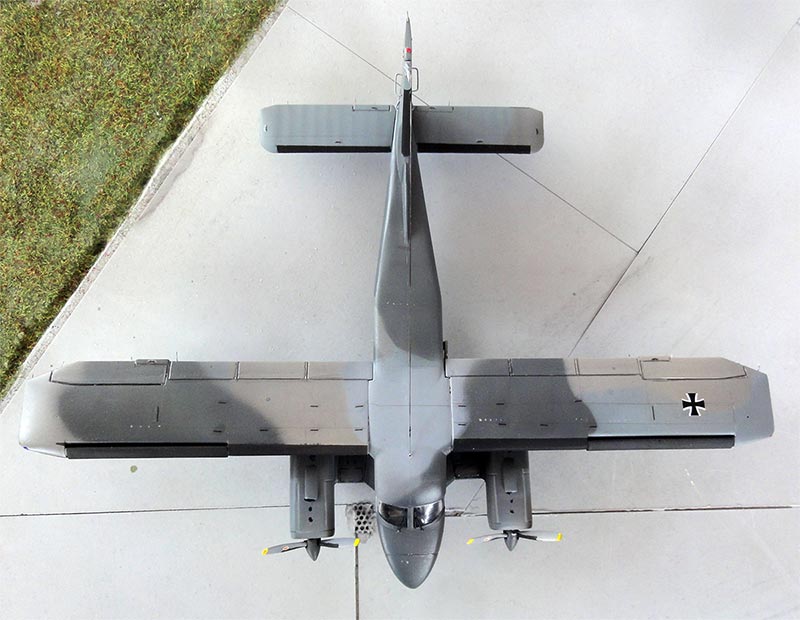
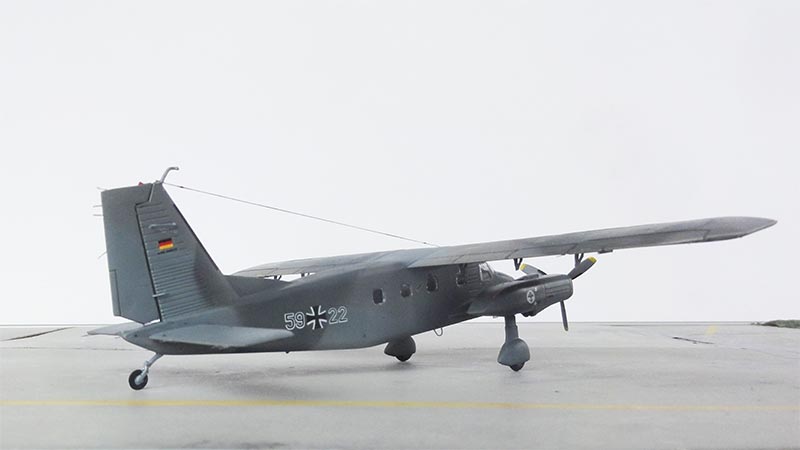
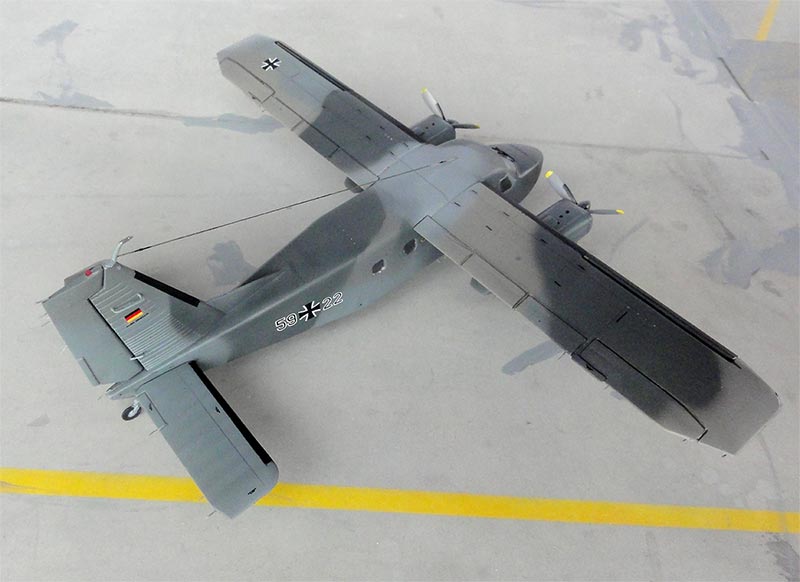
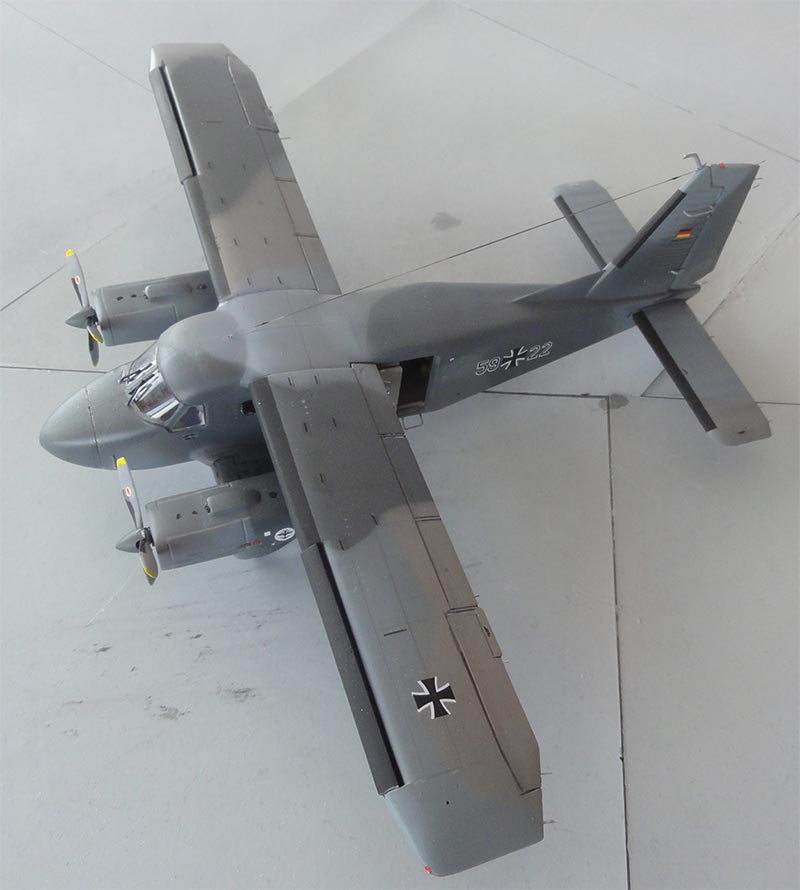
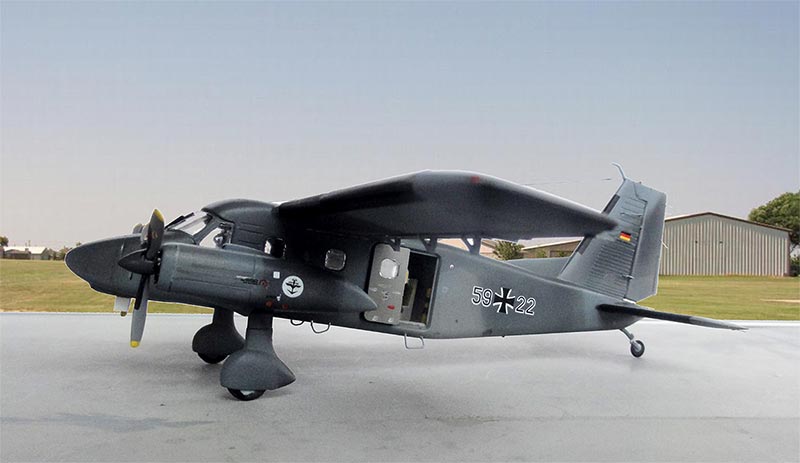
Do-28 D2, Marinegeschwader nr.5, code 59+22 c/n 4197, Kiel, 1985
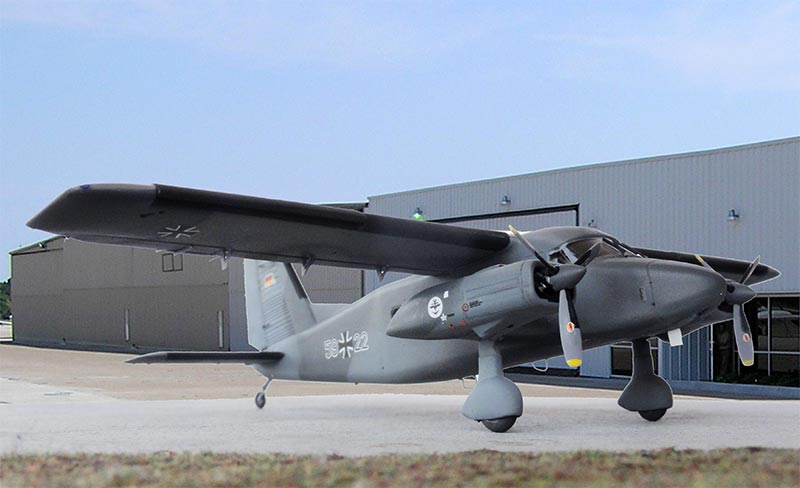
... at Wenningen
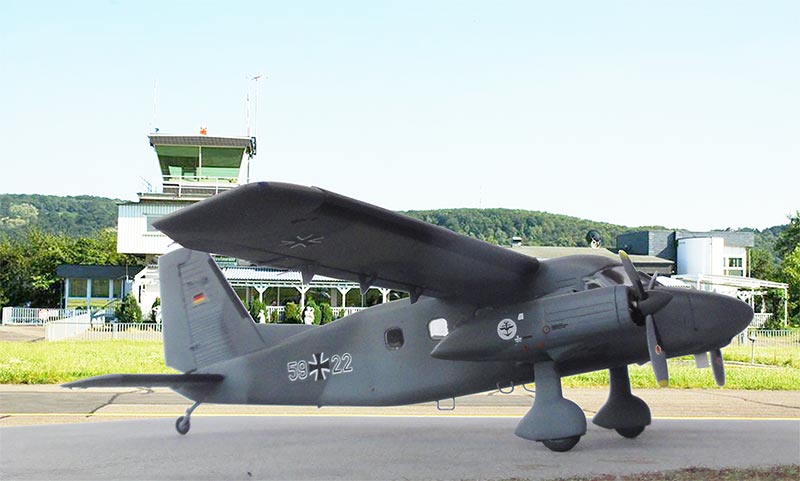
The second model presented is an old Matchbox kit PK-107 model I made over 35 years ago. It had the Swedish Red Cross scheme coded SE-EDT as per kit with the decals supplied.
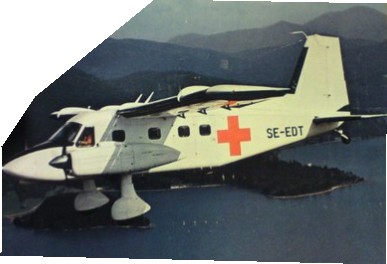
The basic scheme is white with orange panels. Decades later I found a small photo on the internet from a magazine cover seen above .
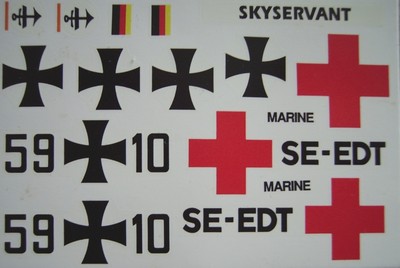
I added some details like extra blade antennas on the fuselage and the long wire antenna as listed earlier like the flap hinges and the many static dischargers.
Note there are prop spinners, probably I lost them over the years... and the props have a light grey paint with yellow tips I found out many years later.

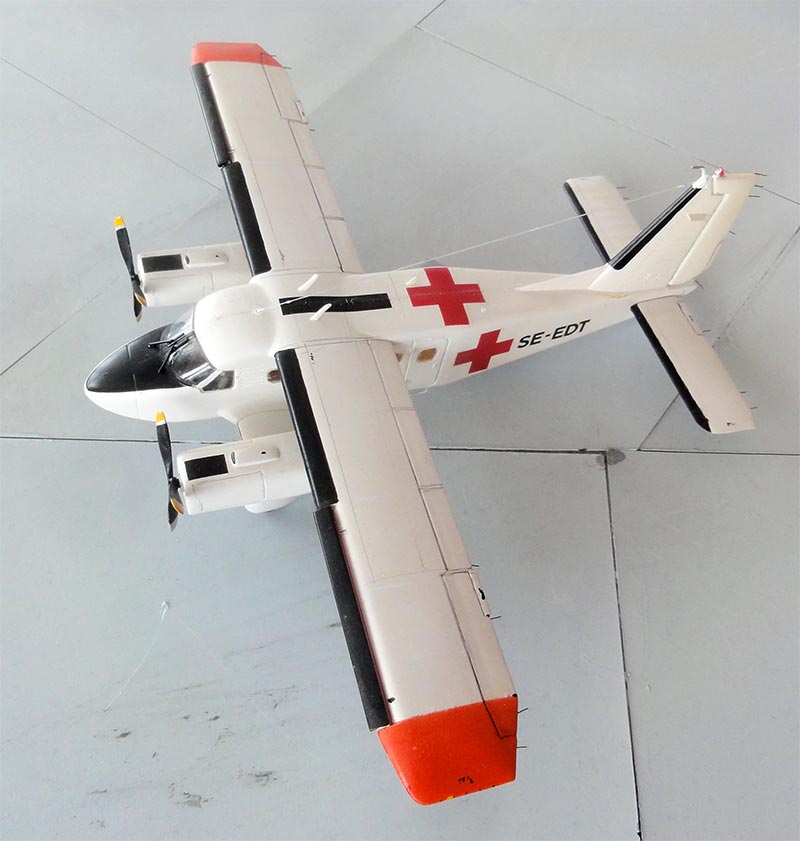
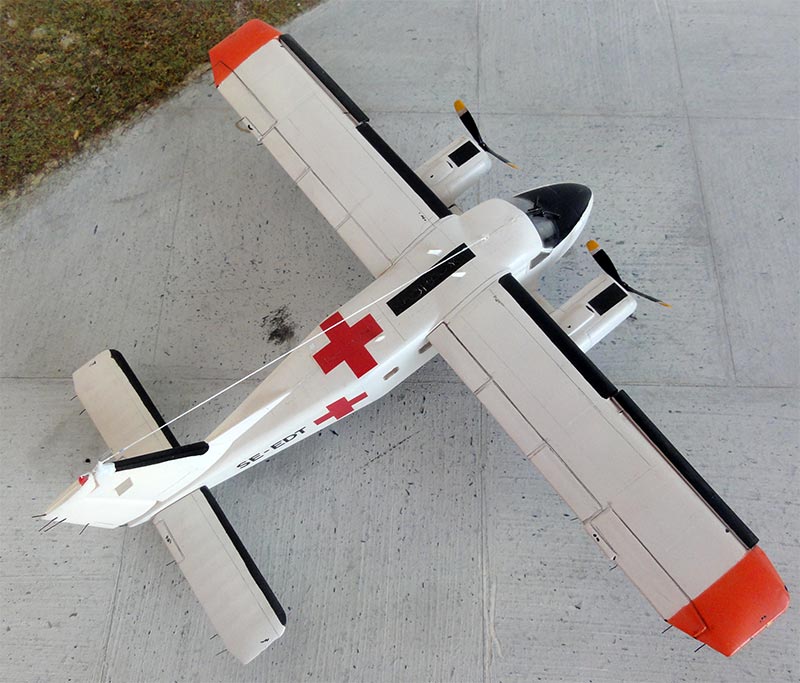
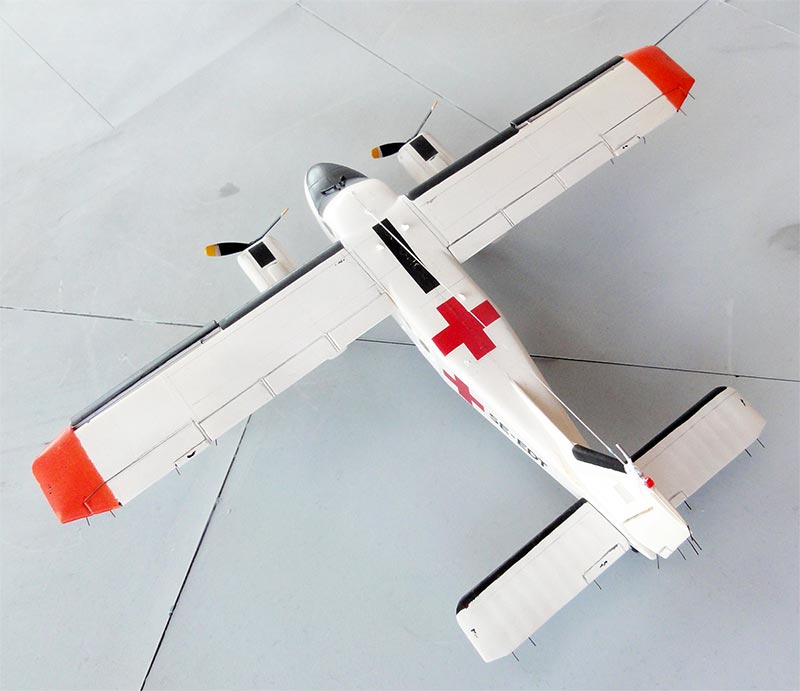
... at an Arctic field...
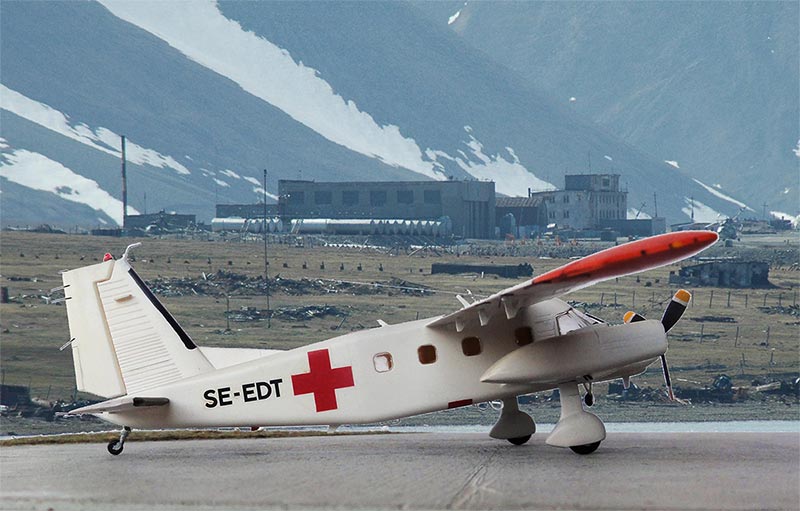
On to next [ Page 2 ... ]
References:
- Dornier Do-28 and Do-228, F-40 publications no.35, chefredakteur S. Wache, Pecom, 1999 (in German)
- Air international, magazine: Volume 17, pages 188-191; Volume 16 pages 16-18 with cut away;
Web:
Dornier: https://en.wikipedia.org/wiki/Dornier_Do_28
Back to 1/72 prop models
(c) Copyright "designer"/ All rights reserved. Your comments are welcomed by webmaster
Created this page Nov 15, 2022